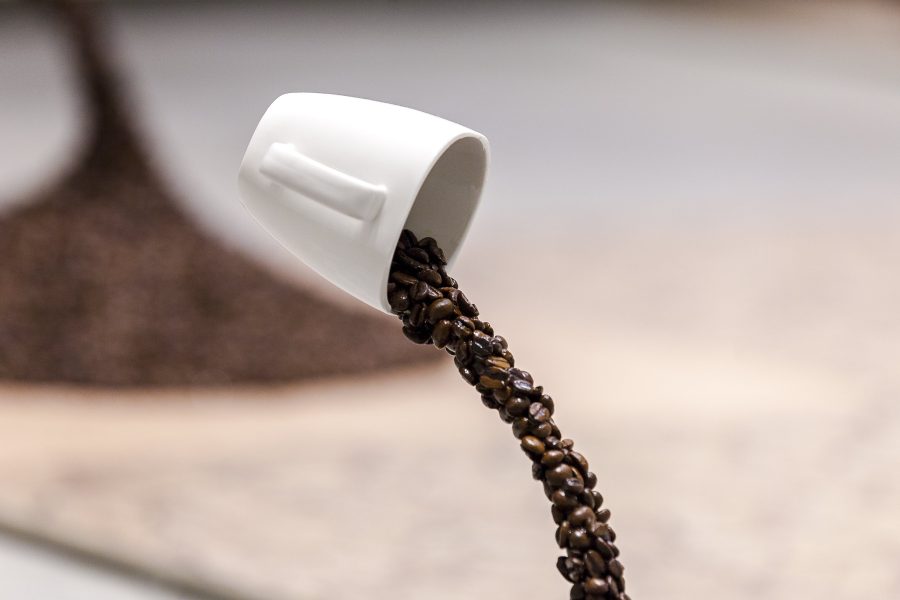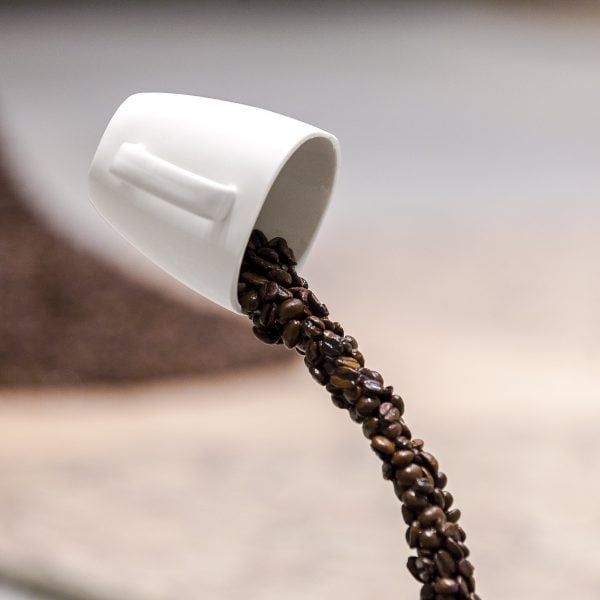Home Participants 20th Biennale of Sydney (2016) Nina Beier
Nina Beier


Nina Beier
Born 1975 in Aarhus, Denmark Lives and works in Berlin, Germany

As part of the Embassy of Translation at the Museum of Contemporary Art Australia, Beier presents three works, the first of which is an installation of two separate, interconnecting pieces. Based on stock images sourced from online image-sharing domains, in Beier’s hands, these are recast in three dimensions as curious sculptural forms, and ‘a collectively produced monument to contemporary concerns’. [2]
With Tileables, 2014, the artist draws from a bank of textures and surfaces developed for 3D modelling software, to depict weathered and aged materials: dried mud, skin, concrete and cracked ice. These patterns are known as ‘tiles’ for their ability to connect and create surfaces, and here they also serve as a base for Allegory of Charity, 2015. The work is a peculiar sculptural arrangement of inverted coffee cups and cascading coffee beans, repeated and perverted variations of the ‘horn of plenty’ motif. At first glance, this incongruous pairing is visually confusing, and the stillness of the image means it is impossible to ascertain if the movement goes in one or the other direction. Considered together, Tileables and Allegory of Charity are literal, frozen moments that somehow combine the everyday with the surreal. In showing how the thing and its representation might not be one and the same, we begin to see Beier’s suspended images for what they are: the result is curious, otherworldly, even absurd.
Another work freighted with paradox is The Complete Works, 2009, a protocol-based performance which sees a dancer move through every piece of choreography they have learnt – chronologically, and from memory. This work renders a very public past private, by virtue of its relationship to that which is remembered and forgotten, while at the same time, foregrounding the way a body contains memory – which has its own history as an object, in space and time.
Nina Beier has been the focus of numerous solo exhibitions, including ‘Cash For Gold’, Kunstverein In Hamburg, Hamburg (2015); ‘Nina Beier’, Contemporary Art Centre, Vilnius (2015); ‘Nina Beier’, David Roberts Art Foundation, London (2014); ‘Sweat No Sweat’, MOSTYN, Llandudno (2013–14); and ‘Liquid Assets’, Glasgow Sculpture Studios, Glasgow (2013). Select group shows have included ‘Performa 15’, New York (2015); ‘La Vie Moderne’, Biennale de Lyon (2015); and ‘The Brancusi Effect’, Kunsthalle Wien, Vienna (2014).
[1] Email to the author, 20 November 2015. [2] ibid.
Far from confining herself to a single medium, Nina Beier plays with materials, perceptions, images and means of communication. Working in and between a diverse range of media – sculpture, installation, assemblage and performance – she nevertheless encircles a number of recurring ideas. Seeking to create subtle conceptual paradoxes, Beier is interested in ‘tracing the fidelity of meaning through the convoluted relationships between objects and images, pinpointing the various ways mediation mutates information from things to representations and back again’. [1] She makes use of anything: from the vocabulary of commercial, cultural and natural fields of production.